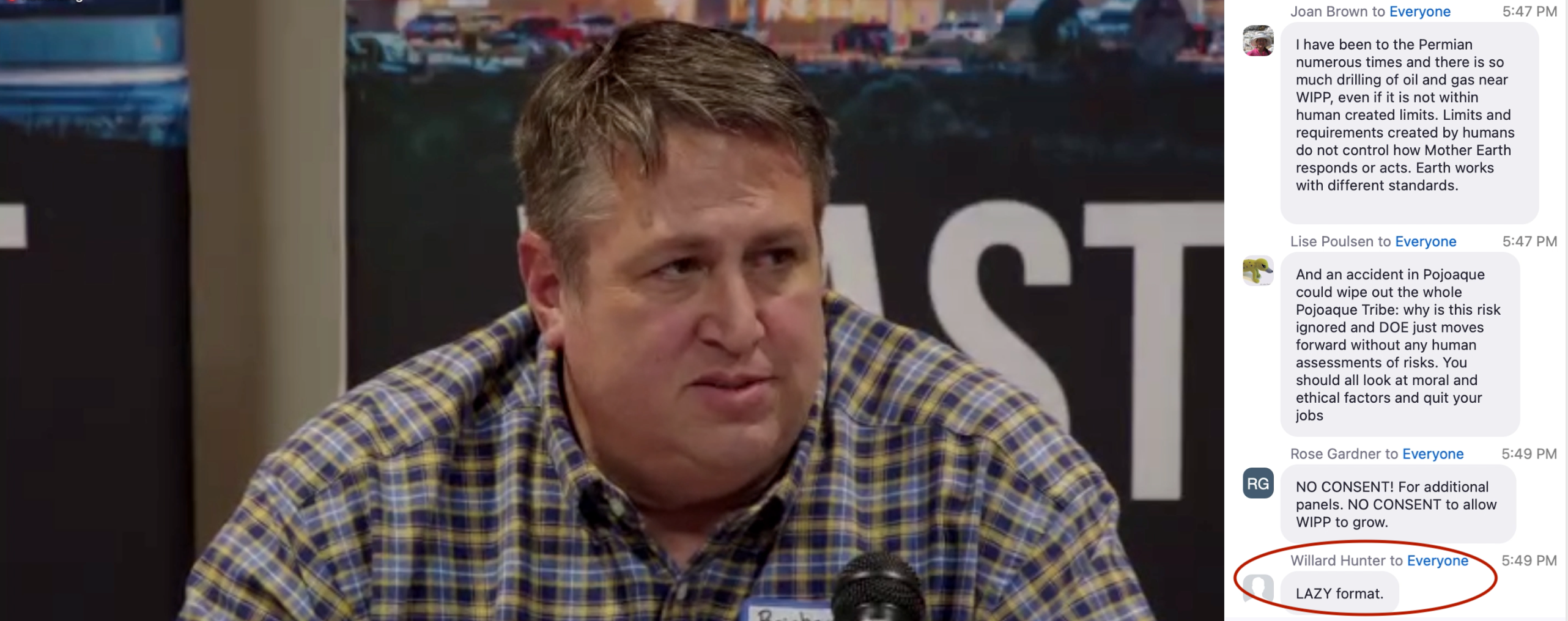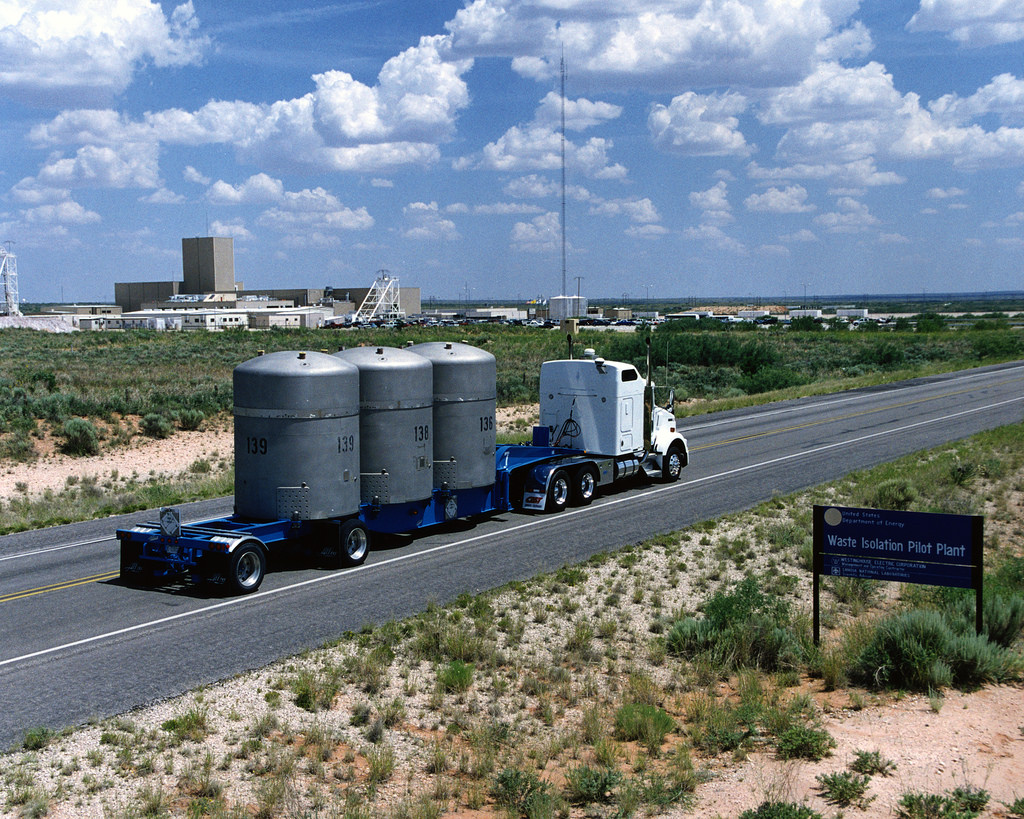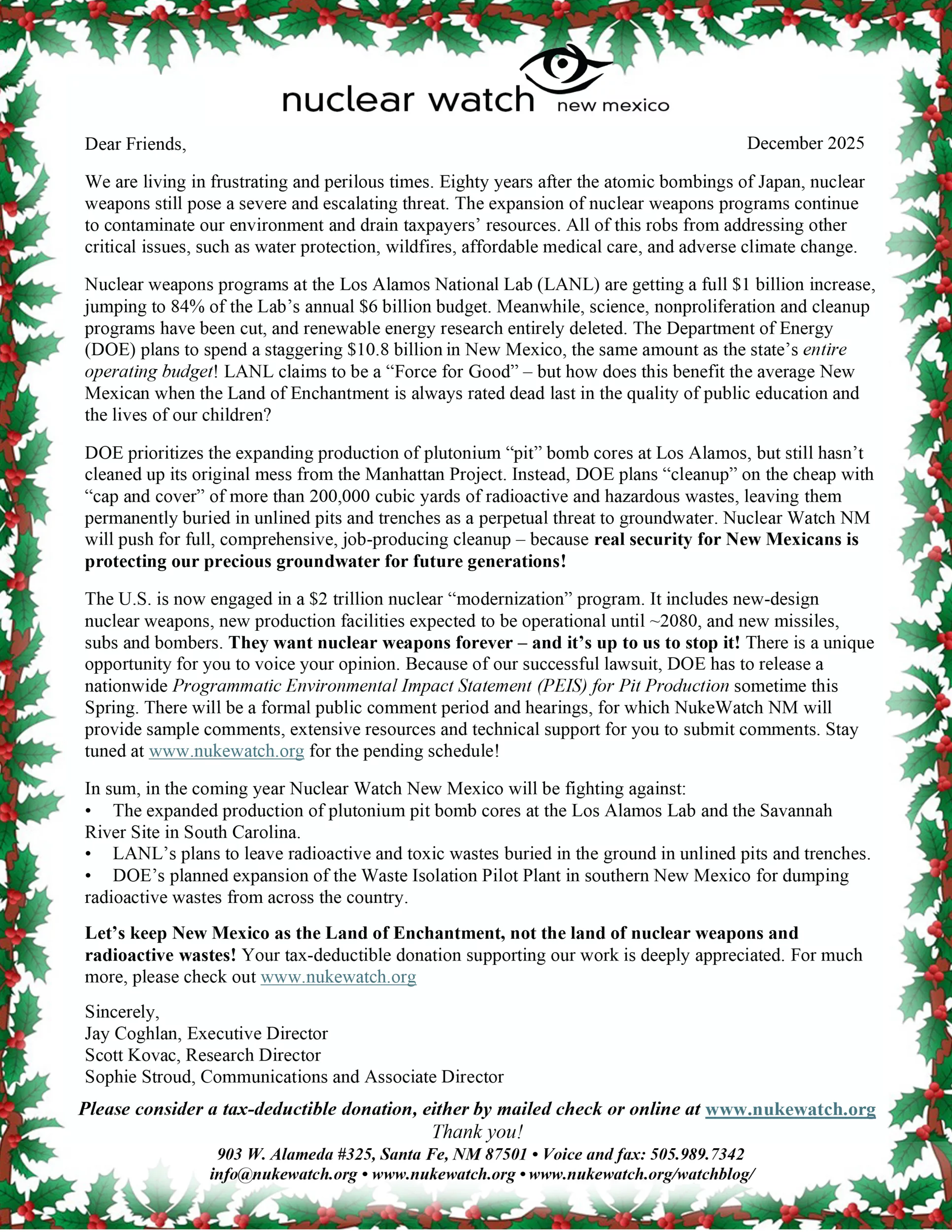QUOTE OF THE WEEK
Nothing Found
It seems we can’t find what you’re looking for. Perhaps searching can help.
LANL’s Central Mission: Los Alamos Lab officials have recently claimed that LANL has moved away from primarily nuclear weapons to “national security”, but what truly remains as the Labs central mission? Here’s the answer from one of its own documents:
LANL’s “Central Mission”- Presented at: RPI Nuclear Data 2011 Symposium for Criticality Safety and Reactor Applications (PDF) 4/27/11
Banner displaying “Nuclear Weapons Are Now Illegal” at the entrance in front of the Los Alamos National Lab to celebrate the Entry Into Force of the Nuclear Weapon Ban Treaty on January 22, 2021
Nothing Found
It seems we can’t find what you’re looking for. Perhaps searching can help.
Follow the Money!
Livermore FY26 Budget Request (Courtesy of Tri-Valley CAREs)
Map of “Nuclear New Mexico”
In 1985, US President Ronald Reagan and Russian President Mikhail Gorbachev declared that “a nuclear war cannot be won and must never be fought.”

NEW & UPDATED
Environment Department Unhappy With Pace Of DOE Characterization, Cleanup Of LANL Chromium Plume
“’We felt that the cleanup was not moving as quickly as it should be moving and then we entered into litigation with DOE. It was moved from state court to federal court. The current LANL cleanup end date for DOE is 2036, which is in the Consent Order, and we don’t feel that they’re going to be able to make that timeline based on the progress they’re making at this time,’ Catechis said.”
BY MAIRE O’NEILL | July 27, 2022 losalamosreporter.com
New Mexico Environment Department Resource Protection Division Director Chris Catechis is not mincing his words when he discusses NMED’s position on the hexavalent chromium plume discovered in 2005 which is part of the legacy waste clean-up mission at Los Alamos National Laboratory.
At a recent meeting of the Legislative Interim Committee on Radioactive & Hazardous Waste, both Catechis and Rep. Christine Chandler of Los Alamos raised concerns that Department of Energy Environmental Management program at LANL is not taking an aggressive enough approach to characterization of the chromium plume.
Catechis explained the 2016 Consent Order between DOE and NMED dealing with legacy waste from LANL left since the Manhattan Project era. The 2016 Consent Order, which is an update from the original 2005 Consent Order, NMED and DOE officials meet each year to set up a series of milestones, campaigns and targets for the coming federal fiscal year that starts Oct. 1. Catechis said an example of those is the Chromium Interim Measure that deals with the characterization of the chromium plume.
From Russia to Ohio…to the Cancer Ward
“According to the Departments of State and Energy, there was a deliberate decision by the U.S. government that U.S. interests would be served by allowing a portion of the highly enriched uranium to be blended into low enriched uranium and to be rapidly removed from Russia while the details of the transparency measures were being worked out,” the GAO report states.”
BY Ken Silva | July 12, 2022 libertarianinstitute.com
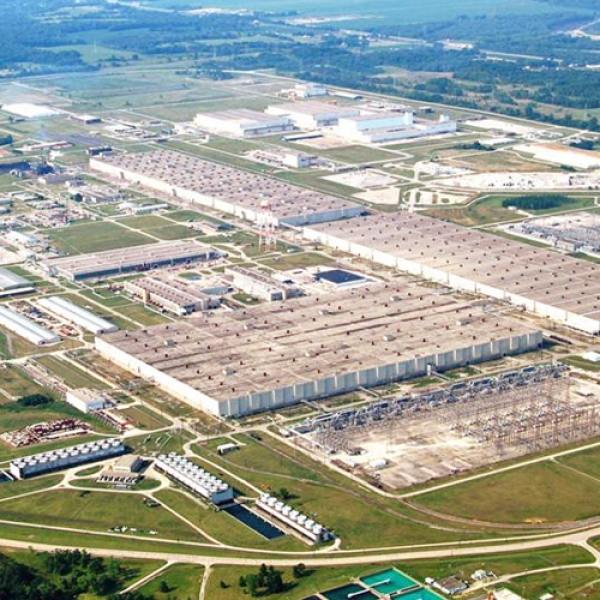
Residents of Piketon, Ohio have long suspected that the area’s sky-high cancer rate stems from the nearby Portsmouth Gaseous Diffusion Plant (PORTS), which served as a uranium enrichment facility for nuclear bombs throughout the Cold War.
Recent reporting from Local 12 WKRC-TV anchor Duane Pohlman sheds light on why the area’s cancer epidemic—more than 500 cases per 100,000, or about 10 percent above state average, according to the Ohio Cancer Atlas—has persisted decades after PORTS stopped helping Uncle Sam build nukes.
Pohlman revealed in May that the PORTS may have been the recipient of polluted uranium from Russia in the 1990s due to a Bill Clinton-era program called “Swords to Ploughshares,” which entailed the United States converting Soviet Union nuclear warheads to uranium that could be used to power U.S. nuclear reactors. Pohlman’s reporting suggests that some of that material was laced with plutonium.
MORE LAB EXPANSION: MAKING WAY FOR NEW PLUTONIUM PIT PRODUCTION ACTIVITY? NNSA/DOE Update: “Los Alamos Field Office Clears Way to Lease Warehouse, Storage Space within 150 miles of Laboratory”
“Multiple properties could be needed to meet LANL needs…Items that would be warehoused or stored include items that are needed for LANL operations,”
BY Carol A. Clark , Los Alamos Daily Post | July 22, 2022 ladailypost.com
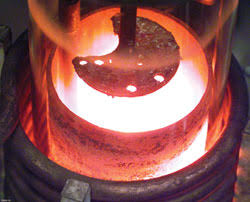
The Department of Energy National Nuclear Security Administration’s Los Alamos Field Office (DOE/NNSA) has issued a Categorical Exclusion to lease properties to provide warehouse and storage space for Los Alamos National Laboratory (LANL) equipment within a 150-mile radius of LANL, which could include properties in several locations of northern New Mexico and southern portions of Colorado.
Nuclear strategy and ending the war in Ukraine
“Removing U.S. nuclear weapons from Europe and Turkey would not weaken NATO militarily, since nuclear weapons have little or no actual usefulness on the battlefield. If they are truly weapons of last resort, there is no need to deploy them so close to Russia’s border. ”
A bold idea: NATO offers to withdraw nukes from Europe (militarily useless, ineffective deterrents as we’ve just seen, & recklessly dangerous) in return for ending the invasion. Putin gets a “win” which costs us nothing worth having. https://t.co/P5txyLEcMs
— Steven Pinker (@sapinker) July 25, 2022
BY OSCAR ARIAS AND JONATHAN GRANOFF, The Hill | July 25, 2022 thehill.com
It is time for bolder efforts to make peace in Ukraine.
War, like fire, can spread out of control, and as President Putin keeps reminding us, this particular conflagration has the potential to start a nuclear war.
At a recent joint news conference with the President of Belarus, Putin announced that Russia would transfer Iskander M missiles to Belarus. Those missiles can carry nuclear warheads, and the move is apparently intended to mirror nuclear sharing arrangements the United States has with five NATO allies — Belgium, the Netherlands, Germany, Italy, and Turkey.
U.S. nuclear weapons were introduced into Europe in the 1950s as a stopgap measure to defend NATO democracies whose conventional forces were weak. The number of nuclear weapons in those five countries peaked around 7,300 warheads in the 1960s, then dwindled to about 150 today, reflecting NATO’s growing conventional strength and its diminishing estimation of the military usefulness of nuclear weapons. But even 150 nuclear weapons could be more than sufficient to touch off a dangerous confrontation with Russia.
High anxiety as Japan takes another step toward releasing wastewater from crippled Fukushima nuclear plant into sea
“The unprecedented, controversial disposal operation is likely to take decades. ”
BY LUCY CRAFT, CBS NEWS | July 25, 2022 cbsnews.com
Tokyo — The fishing industry around Japan’s Fukushima coast expressed disappointment and resignation over the weekend as long-expected plans to start releasing treated wastewater into the ocean from the crippled Fukushima Daiichi nuclear power plant moved one step closer to reality. The drastic measure has been adopted as the only practical way out of a dilemma that’s plagued the damaged plant for more than a decade.
Late last week, Japan’s national nuclear regulator formally endorsed the plan to discharge more than 1 million tons of wastewater from the plant into the sea off Japan’s Pacific coast. The water will be filtered first to remove about 60 radioactive isotopes, with the exception of tritium, which can’t be extracted using existing technology.
CNN – Russian Navy’s massive submarine could set the stage for ‘a new Cold War’ in the oceans
“Both US and Russian officials have said the torpedoes could deliver warheads of multiple megatons, causing radioactive waves that would render swathes of the target coastline uninhabitable for decades.”
By Brad Lendon, CNN, CNN | July 23, 2022 cnn.com
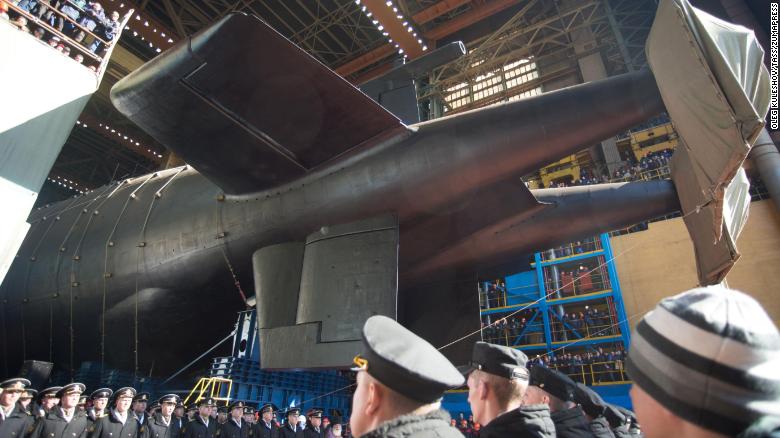
Seoul, South Korea (CNN) The Russian Navy has taken delivery of what is the world’s longest known submarine, one its maker touts as a research vessel — but what others say is a platform for espionage and possibly nuclear weapons.
The Belgorod was turned over to the Russian Navy earlier this month in the port of Severodvinsk, according to the country’s largest shipbuilder, Sevmash Shipyard.
Experts say its design is a modified version of Russia’s Oscar II class guided-missile submarines, made longer with the aim to eventually accommodate the world’s first nuclear-armed stealth torpedoes and equipment for intelligence gathering.
If the Belgorod can successfully add those new capabilities to the Russian fleet, it could in the next decade set the stage for a return to scenes of the Cold War under the ocean, with US and Russian subs tracking and hunting each other in tense face-offs.
Tularosa Basin Downwinders honor those killed from aftermath of bomb tests
“We come here to remember those people (who died) so that they’re never forgotten,” Tularosa Basin Downwinders Consortium co-founder and Director Tina Cordova said.
“We just want to thank the people who have continued to support us and hope that more and more people will get involved with us. We always want to thank the people that have supported us throughout the years… We’re just going to keep fighting the fight.”
By Nicole Maxwell, Alamogordo Daily News | July 19, 2022 alamogordonews.com
Luminarias filled the Tularosa Little League baseball field Saturday, July 16 to commemorate the more than 800 people whose deaths were attributed to radiation exposure believed to result from atomic bomb tests at the Trinity Site near Alamogordo.
The tests that began on July 16,1945 and for decades were blamed for widespread cancers and other diseases among nearby residents.
To mark the 77th anniversary of the Trinity atomic bomb tests, the Tularosa Basin Downwinders Consortium held its annual candlelight vigil at the Tularosa Little League baseball field.
Governor: NM Won’t Be a ‘Dumping Ground” for Nuclear Waste
“None of this waste we’re talking about is in New Mexico…If it actually were a good thing, if it were safe, Holtec or anybody else wouldn’t be thinking about trying to find someplace else.” Don Hancock, nuclear waste program director at the Southwest Research and Information Center
By Roz Brown Public News Service | July 19, 2022 publicnewsservice.org
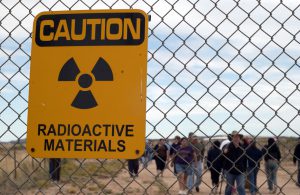 After being rejected by Texas and Utah, the federal government has now picked New Mexico to house the nation’s spent nuclear fuel, but the governor said the state will not be a “dumping ground.”
After being rejected by Texas and Utah, the federal government has now picked New Mexico to house the nation’s spent nuclear fuel, but the governor said the state will not be a “dumping ground.”
The U.S. Nuclear Regulatory Commission (NRC) announced last week it intends to issue a license to Holtec International, to locate a toxic waste storage facility in Lea County. Holtec has proposed to transport high-level nuclear waste from the East Coast across the country via rail lines to a facility slated for the state’s southeast corner.
“LAZY format”: A Failed WIPP Community Engagement Meeting in Santa Fe
The U.S. Department of Energy and the Office of Environmental Management held a Presentation and “Community Forum” for Santa Fe on the Waste Isolation Pilot Plant (WIPP), formatted as a hybrid in-person and Zoom meeting on Thursday, July 7, 2022. Nuclear Watch New Mexico is extremely unsatisfied with the outcome of this meeting, and is not alone in criticizing both the substance of the meeting and the format.
We have recorded this public forum with the chat included because there was an overwhelming amount of participation within the chat, and we feel the chat is a valuable resource in and of itself, as well as a testament to the large amount of community concern present around the subject of WIPP. View that recording HERE (and below).
Critics displeased with forum on nuclear waste site
What was billed as a public forum in Santa Fe for the underground nuclear waste disposal site in Carlsbad turned out to be a lengthy slide show with only a handful of questions addressed, angering activists and at least one public official.
“[Santa Fe County Commissioner Anna Hansen] wrote a letter to federal emergency management officials…complaining about how the forum was conducted, she said. One official wrote back, expressing sympathy and saying the forums are supposed to foster public participation and boost transparency, Hansen said. If those are the goals, Hansen added, then this forum failed miserably.”
“I feel the people were treated with such disrespect,” Hansen said.
By Scott Wyland swyland@sfnewmexican.com The Santa Fe New Mexican | July 8, 2022 santafenewmexican.com
The 100-plus people who attended the Thursday night forum for the Waste Isolation Pilot Plant at the Santa Fe Community Convention Center were told to jot down their questions on index cards about the repository, which has stirred controversy since it opened in 1999.
WIPP takes radioactive materials from Los Alamos National Laboratory as well as out-of-state sources such as the Hanford Site and Idaho National Laboratory.
The containers of transuranic waste — mainly contaminated gloves, clothing, equipment, soil and other materials — are entombed in salt caverns 2,150 feet underground. WIPP was initially planned to bury waste for 25 years, but federal managers now say it can run until at least 2083.
Feds replace underground waste storage management with $3 billion deal
“A watchdog group criticized the Energy Department for choosing a subsidiary of Bechtel, a former partner in the consortium Los Alamos National Security LLC, which improperly packaged the waste drum that exploded at WIPP.”
“A private corporation that blew up WIPP operations in 2014 is now going to run WIPP?” said Jay Coghlan, executive director of the nonprofit Nuclear Watch New Mexico. “Does the Department of Energy have no contractor accountability?”
By Scott Wyland swyland@sfnewmexican.com The Santa Fe New Mexican | July 8, 2022 santafenewmexican.com
The U.S. Energy Department has awarded a $3 billion, 10-year contract to a Bechtel subsidiary to replace the current operator running the underground waste storage site in Carlsbad.
Tularosa Basin Range Services, based in Reston, Va., will take over daily operations of the Waste Isolation Pilot Plant after Nuclear Waste Partnership’s contract expires Sept. 30.
Tularosa Basin, whose parent company is Chicago-based Bechtel National Inc., was among five bidders, and its proposal was “determined to be the best value to the government,” the Energy Department said in a statement.
The contract will go for four years, with six one-year extensions available after that.
Nothing Found
It seems we can’t find what you’re looking for. Perhaps searching can help.
Nothing Found
It seems we can’t find what you’re looking for. Perhaps searching can help.
Waste Lands: America’s Forgotten Nuclear Legacy
The Wall St. Journal has compiled a searchable database of contaminated sites across the US. (view)
Related WSJ report: https://www.wsj.com
New Nuclear Media: Art, Films, Books & More
Nothing Found
It seems we can’t find what you’re looking for. Perhaps searching can help.
Nothing Found
It seems we can’t find what you’re looking for. Perhaps searching can help.













